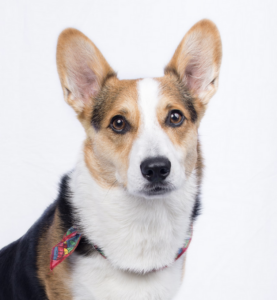As dog owners, we are constantly thinking about what our dog needs. Our minds 
There are many different types of anxiety that our dogs can experience – from being triggered by loud or disruptive stimuli such as thunderstorms, fireworks, and other loud noises, to separation anxiety when we leave them alone, to generalized pain or fear, to age-related brain health changes. Sometimes, we aren’t even quite sure what could be causing our dog distress. Regardless of the cause, most dog owners are on a never-ending hunt to solve the puzzle. Understanding the signs of anxiety is the first step.
An anxious dog exhibits specific dog behavior tied to common symptoms of anxiety – keep reading to learn more.
Separation anxiety can be especially tricky for both young and older dogs alike – these symptoms can manifest as destructive behavior like ripping up toilet paper or barreling through the trash, defecating on the floor, pacing, and other behavioral problems that seem to pop up a short period of time after you leave the house. While separation anxiety can have similar symptoms to general anxiety like those listed above, it can be especially challenging to figure out since you are not present to soothe your pup.
Anxiety can be looked at as a puzzle – there are many pieces that will help with positive progress, and it will rarely be a singular solution that will solve your pups problems. Stay positive and remain hopeful – your dog is so lucky to have an owner who cares so deeply about their wellbeing. Find the right tools for success, and you AND your dog will feel better.
Successful solutions include:
Supplements like Chill from CHOU2 PHARMA / PET WELLNESS are a great way to support your dog’s nervous system when stress runs rampant.
© Copyright 2022 CHOU2 PHARMA. All Rights Reserved. Privacy Policy. Terms & Conditions.
Cannabinoid products for animals are not yet approved by the FDA Center for Veterinary Medicine. It is advised to consult with a veterinary professional regarding any changes or additions to your dog’s health.
Mark Cushing leads CHOU2 PHARMA’s advocacy and legal efforts—working closely with his external network and Dr. Jeff Pollard—to improve the understanding, education, and policy regarding cannabinoid pet health care. His focus is supporting veterinarians’ ability to discuss and recommend cannabinoid-based products within their practices.
Mr. Cushing provides high-level strategic advice, state and federal lobbying, regulatory and policy services, and consulting to animal health and veterinary clients throughout North America. Since 2004, he has specialized in animal health, animal welfare, veterinary, and veterinary educational issues, developing a cutting-edge practice across these sectors. He currently leads several industry coalitions and initiatives. Mr. Cushing has guided successful AVMA (American Veterinary Medical Association) accreditations for a growing list of veterinary colleges, including new accreditations.
A frequent speaker at veterinary medicine and other animal policy conferences, he’s an adjunct professor of law at the Duncan School of Law in Knoxville, Lewis & Clark Law School in Portland, and the University of Oregon School of Law. He’s also an honors graduate with distinction from Stanford University and the Willamette University College of Law.
As the founder and managing partner of the Animal Policy Group, LLC (APG), Mr. Cushing offers representation for a wide range of veterinary and pet health interests. Most recently, Mr. Cushing authored Pet Nation, a Penguin Random House title that explores the forces behind pets becoming treasured members of the family.
Mark Cushing leads CHOU2 PHARMA’s advocacy and legal efforts—working closely with his external network and Dr. Jeff Pollard—to improve the understanding, education and policy regarding cannabinoid pet health care. His focus is supporting veterinarians’ ability to discuss and recommend cannabinoid-based products within their practices.
Mr. Cushing provides high-level strategic advice, state and federal lobbying, regulatory and policy services and consulting to animal health and veterinary clients throughout North America. Since 2004, he has specialized in animal health, animal welfare, veterinary and veterinary educational issues, developing a cutting-edge practice across these sectors. He currently leads several industry coalitions and initiatives. Mr. Cushing has guided successful AVMA (American Veterinary Medical Association) accreditations for a growing list of veterinary colleges, including new accreditations.
A frequent speaker at veterinary medicine and other animal policy conferences, he’s an adjunct professor of law at the Duncan School of Law in Knoxville, Lewis & Clark Law School in Portland and the University of Oregon School of Law. He’s also an honors graduate with distinction from Stanford University and the Willamette University College of Law.
As the founder and managing partner of the Animal Policy Group, LLC (APG), Mr. Cushing offers representation for a wide range of veterinary and pet health interests. Most recently, Mr. Cushing authored Pet Nation, a Penguin Random House title that explores the forces behind pets becoming treasured members of the family.